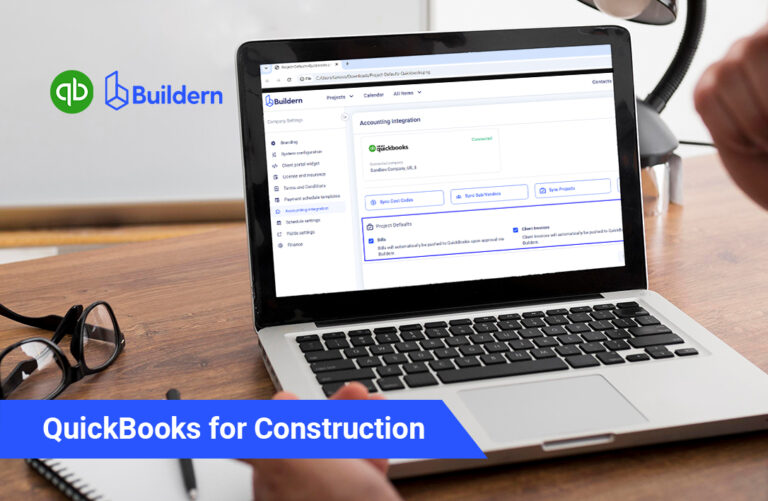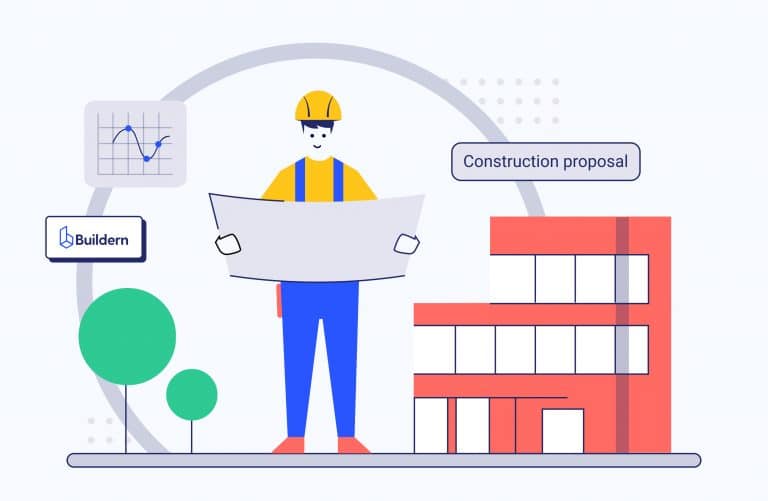Construction Project Team Structure: How to Manage a Construction Team
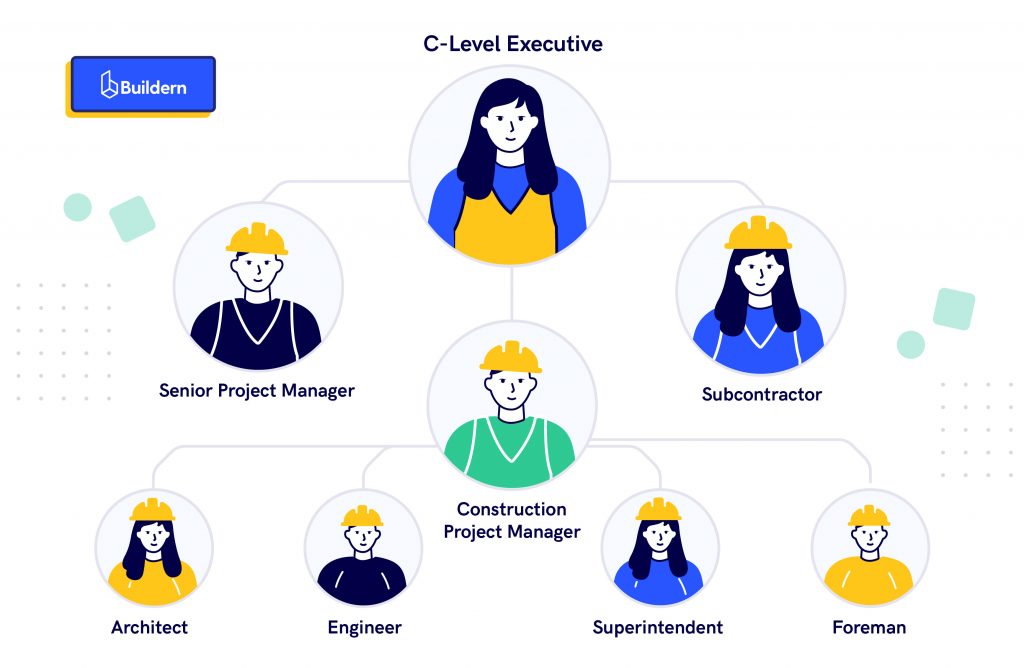
Great teamwork makes dreams work! A related study shows that smooth collaboration and objective recognition of a workgroup’s achievements increase profits by 29%. The construction industry, like any other, is no exception. Building an effective team structure takes the combined efforts of everyone involved in the venture – from C-level executives to architects, engineers, and construction workers. While there is no one-size-fits-all formula for a successful construction project team structure, understanding the various roles and responsibilities that make up a typical team is essential for a smooth workflow.
A company may employ niche-leading specialists, invest in advanced technology, and have the most cutting-edge equipment. Still, these resources are wasted without a well-organized construction project team.
Let’s explore the core roles and positions defining job peculiarities for each.
Construction Project Team Structure: Core Functions Defined
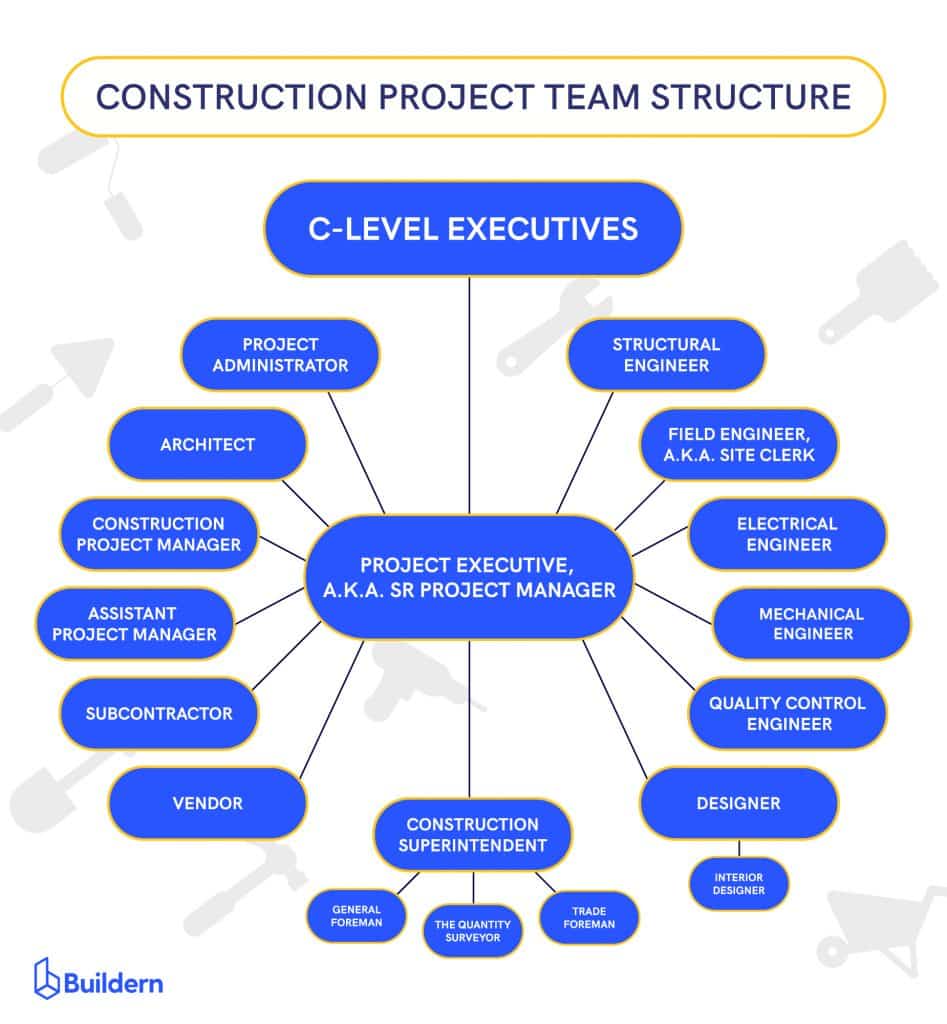
As with any team, the construction project team structure follows general principles with clearly defined roles and responsibilities. The key players defining the command chain are responsible for external communications, financial reporting, and quality control. Others have more interdependent roles as part of the project team.
Regardless of the sphere, teams should include a C-level executive, a project executive, and a construction project manager. These three individuals form the cornerstone of effective construction management.
As a general rule of thumb, a project team should also include professionals managing the internal workflow. These professionals must be knowledgeable, organized, and have excellent communication skills.
Apart from the core functions, a construction crew may include architects, designers, engineers, and quality surveyors, as these people will be responsible for the project’s technical aspects.
So, what’s the general overview of a typical project organization chart, and how does each team member communicate with the other?
Let’s dig deeper to explore!
C-Level Executives in a Construction Project

In the organization chart outlining team hierarchy, C-level executives stand at the top. C-level executives are responsible for setting the project’s overall goals and strategies, as well as determining the budget and timelines.
As the utmost influential decision-makers in charge of the larger picture, C-level executives are responsible for making strategic business decisions that will shape an organization’s future.
There are several C-level positions that vary between industries, but the most common ones are the CEO, CFO, COO, and CMO. Here’s a brief description of each position:
- The CEO (Chief Executive Officer) oversees business operations, with other C-level executives reporting to them. CEOs are responsible for setting the organization’s overall direction and goals. Acting as the company’s public face, the CEO often also manages media attention and investor relations.
- The CFO (Chief Financial Officer) is responsible for managing financial resources, preparing corporate financial reports, and overseeing financial activities. They manage long-term budgeting by implementing risk analyses and cost-control strategies.
- The COO (Chief Operating Officer) oversees operational activities, including day-to-day management and logistics. They execute strategies and policies set by the CEO, as well as organize efficient operations, planning, and execution in a project team setting.
- The CMO (Chief Marketing Officer) works to increase the company’s social presence and build its reputation in the digital market. Targeting campaigns, ads, and other digital marketing approaches help bring the company’s message to a broader audience.
By working together, the C-level executives shape the command chain and keep the team running according to plan.
Soft Skills for C-Level Executives
C-level executives must possess soft skills in a leading role to achieve the best results. Here are a few essential skills to develop:
- People focus: As a leader, C-level executives build relationships and trust with their team.
- Leadership: They are able to lead teams and inspire them to work as one for a common goal.
- Strategic thinking: C-level executives are able to analyze situations and develop practical solutions.
- Decision-making: Leaders make decisions quickly, accurately and confidently to maximize the team’s productivity.
- Digital-centric behavior: With the digital world expanding rapidly, C-level executives should be up-to-date with the latest technologies to ensure their company’s success.
- Communication: C-level executives need to communicate with their teams and external stakeholders to ensure everyone is on the same page.
Project Executive: Senior Project Manager
The next construction project team hierarchy level belongs to project executives, a.k.a. senior project managers. This is the highest non-C-level position responsible for macro-level construction project management.
Senior project managers maintain closer contact with clients and oversee the project’s day-to-day activities. Their position mainly involves working from the office and visiting the construction site from time to time. For longer and more complex projects, on-site project managers ensure proper execution.

While the construction project manager vs. project manager comparison is a hot topic in the industry, some companies prefer hiring individuals with extended skills and construction experience to implement their projects. However, it usually takes over 15-20 years of experience working as a project manager to obtain the “Senior” label.
Here’s a brief overview of a Senior PM’s key responsibilities:
- Watching the schedule and budget: The senior PM oversees the project’s adherence to time and cost estimations.
- Compiling reports: Senior PMs monitor overall progress and document changes to the initial scope of work.
- Supervising compliance with specifications: Senior construction project managers are required to test, inspect, and ensure quality adherence to established measures.
- Boosting teamwork: Initiating and monitoring collaborations, meetings, and protocol constancy.
- Collaborate with superintendents and foremen: A Senior PM’s duties include planning, organizing, and directing construction project-related activities.
A Senior PM’s duties also include managing and training subordinates. They are a key player in the construction project team structure, ensuring proper communication between the various project sites and facilitating information exchange between the team members and stakeholders.
Soft & Hard Skills for Senior Project Managers
Senior project managers possess a broad set of skills that include:
- Tech-driven mindset: As a Senior project manager, you must have a good grasp of advanced project management tools for construction. This is the skill to help you implement a digitized workflow and become more efficient.
- Leadership: Senior PMs must be able to lead their team and make sure everyone respects each member’s professional contribution.
- Problem-solving: Senior project managers must be able to quickly identify and solve issues that arise during the construction process.
- Architectural and engineering knowledge: Having a solid understanding of architectural and engineering principles helps Senior PMs coordinate teams for swift problem-solving without external help.
The Architect

Although architects generally don’t get involved in construction work, they are a necessary part of the construction team. Architects are primarily responsible for designing projects and keeping them in line with the client’s requirements.
Construction companies hire architects to work on particular projects, often at the start of planning. Understanding the client’s needs and expectations, architects work with the design team to create a design and layout that meets the imposed requirements.
Architects need to possess an extensive portfolio of professional experience to be eligible to work with a construction company.
An architect must tick all the boxes below in terms of knowledge and experience:
- Functionality: Architects are responsible for considering the future building that suits the client’s needs, allowing for optimal and comfortable use of space.
- Reliability and safety: The future building should meet all safety requirements and regulations.
- Sustainability: As buildings consume a lot of energy, architects must consider and design structures as energy-efficient as possible.
- Aesthetics: A creative mindset and an eye for detail are essential in designing an aesthetically pleasing building.
Soft Skills for Architects
As a construction architect, you need to be a:
- Creative thinker: Architects need to be able to come up with inventive ideas that meet the client’s requests.
- Organized and detail-oriented: To ensure the project’s success, architects must pay attention to detail and keep the teams organized.
- Strong communicator: Architects should be able to communicate their ideas clearly to everybody involved in the project.
- Team player: As a team, architects need to be able to work closely with other specialists. This gives them a better understanding of creating a building that meets the client’s requirements.
Construction Project Manager
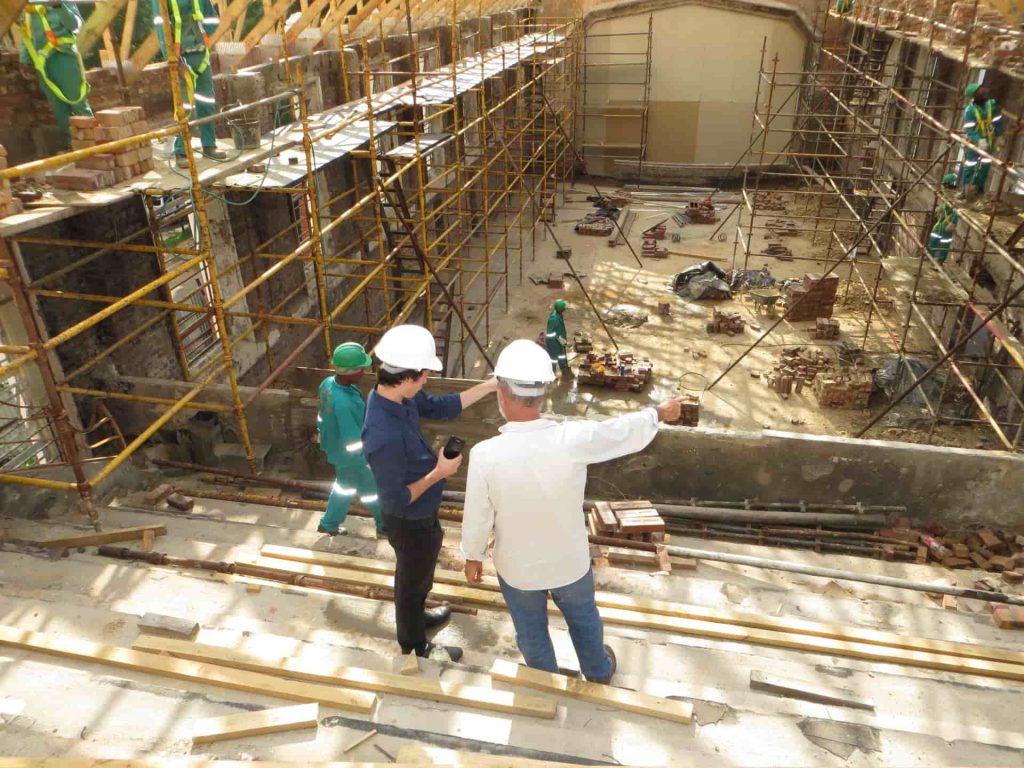
Although construction project managers don’t have the word “Senior” in their position title, they’re still integral to the process.
Project managers are ultimately responsible for a project’s success from start to finish. They coordinate all team members, manage the estimated budget, monitor the purchasing of necessary materials, cooperate with vendors, and keep the construction schedule on track.
As the person in charge of managing the construction process, CPMs have the following responsibilities:
- Estimating and budgeting: Preparing an accurate estimate of the project costs and managing the budget.
- Management and scheduling: PMs are responsible for setting timelines and milestones and creating a detailed schedule.
- Communication: PMs must ensure proper communication between the team members on technical and contract details. Also, they are responsible for communicating with the project owner and stakeholders to ensure everyone has updated information regarding the project’s progress.
- Quality control: Construction project managers must comprehensively understand building codes and regulations. They also manage the work orders.
Soft Skills for Construction Project Managers
Project managers must possess an advanced pack of niche-related skills, including the following:
- Task delegation: Good CPMs are able to delegate and prioritize tasks and efficiently organize the workflow.
- Leadership: The construction project manager is a strong leader who empowers team members and serves as a role model for them.
- Detail-oriented: Construction CPMs are the gatekeepers of all the information related to the project and should keep track of every single detail.
- Analytical thinking: CPMs have an analytical mindset to evaluate problems and risks and design the best solutions.
Assistant Project Manager

Viewed as the junior project manager, an assistant is responsible for completing the tasks delegated by their PM. These are future PMs in training who perform considerable legwork at the direction of their PMs.
Some of the core tasks of an Assistant project manager may include but are not limited to:
- Project planning and budgeting: APMs help develop project plans, cost estimates, and budgets. They also help with the selection of vendors and subcontractors.
- Documentation: Document management is a responsible task for each project regardless of industry. Construction document management involves creating and maintaining technical documents, drawings and plans.
- Quality control: APMs must check the quality of work done by subcontractors and other team members.
- Site coordination: APMs are responsible for monitoring on-site activities and ensuring they comply with safety regulations.
Assistants should have over 2 or 5 years of professional experience until they are promoted to a Project Manager’s position.
Subcontractor

Subcontractors are specialized workers who fulfill a specific scope of tasks delegated to them by the general contractor. They are free agents usually hired on a contractual basis and don’t have a direct work relationship with the owner. Instead, subcontractors report to the general contractor or the project manager.
Subcontractors have their own set of responsibilities, including but not limited to the following:
- Assembling and installing the equipment and materials
- Keeping track of the necessary tools, supplies, and equipment
- Managing their own team members (if applicable)
Subcontractors should have relevant working experience and a portfolio of previous projects to prove their knowledge and relevant competence.
Soft Skills for Subcontractors
Like any other construction team member, subcontractors should have soft skills to stay competitive in the market and perform efficiently on projects.
Some of the primary skills include:
- Communication: Subcontractors should be able to communicate effectively with other team members, understand their thoughts and feelings, and help them work together efficiently.
- Problem-solving attitude: View challenges as opportunities and find creative solutions to resolve any issues that pop up during the project.
- Time sensitivity: Being able to meet deadlines and complete tasks on time will be your ace in the hole for the competitive construction market.
- Resourceful: Subcontractors should have extensive knowledge of the available resources to finish their tasks and projects within budget and time constraints.
Vendor

In brief, a vendor is any person or company providing the necessary materials for the construction project. They are contracted to supply, deliver, and install the specific products required for a particular job. As a vendor, you may need to provide warranties and guarantees for the materials you are supplying.
Here’s what you’ll be responsible for when hired to supply materials for a construction project:
- Provide competitive quotes and pricing for the products you offer
- Negotiate contracts with the general contractor or the project manager
- Deliver the materials on time and ensure they are in good condition when received by the construction team
Soft Skills for Vendors
Vendors should possess several essential qualities to be able to thrive in the construction industry, such as:
- Excellent written and verbal communication skills: To negotiate and discuss contract details with clients.
- Adaptability: Being consistent and efficient in the face of changing demands.
- Effective multitasking: While working with several companies and clients simultaneously, vendors must be flexible regarding their working hours and task assignments.
- Customer service oriented: Ensuring customers have a positive experience with your products, services, and the overall process requires top-notch organizational skills.
Construction Superintendent
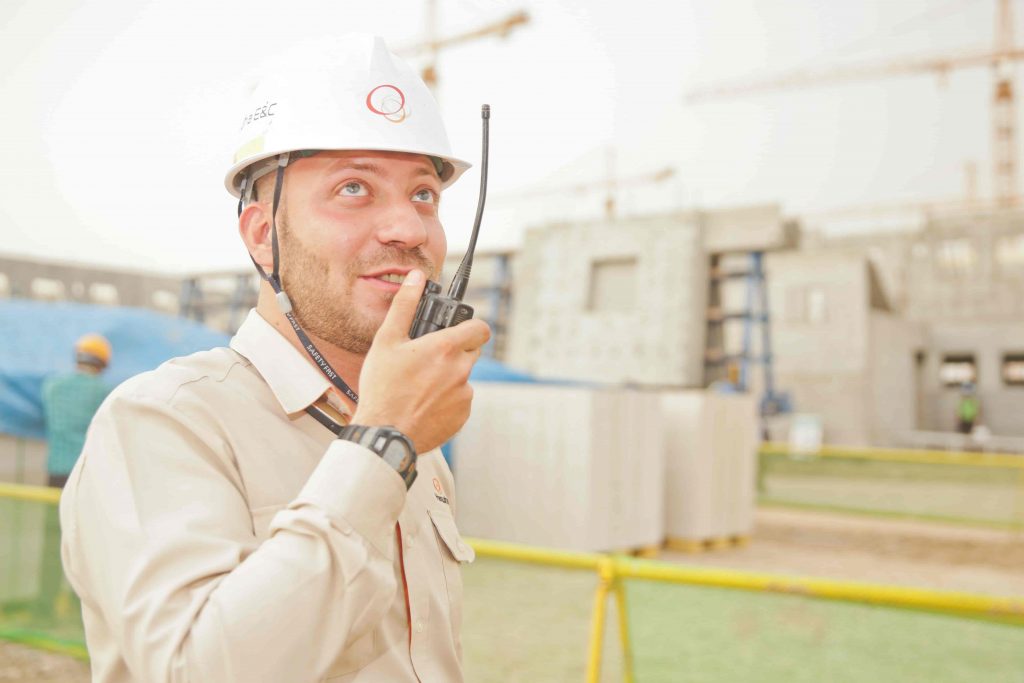
Construction project managers have the option to appoint a superintendent, the person in charge of supervising and coordinating construction activities on-site.
With overlapping responsibilities and roles with PMs, superintendents are responsible for taking care of on-site labor and materials. Their duties include but are not limited to the following:
- Overseeing construction sites: Superintendents manage the daily activities of contractors, subcontractors, and other team members.
- Creating detailed reports: Superintendents know how to document the progress of their project, which includes taking photographs, updating logs, and producing quality control reports.
- Inspection: As a superintendent, you will need to inspect the work done by contractors. This will ensure everything complies with safety regulations and building codes.
Soft Skills for Superintendents
In dealing with workers directly involved in on-site construction, superintendents must have excellent communication and leadership skills. Apart from that, here are a few more soft skills to develop:
- Analytical mindset: Superintendents have an analytical mindset to assess the progress and quality of their projects.
- Problem-solving: They are able to identify and solve problems quickly to prevent delays in the construction process.
- Handling pressure: Superintendents are usually under a lot of stress and pressure, so they must be able to handle it calmly. Dealing with on-site issues, delays and other problems requires a lot of patience.
- Technical skills: Superintendents must understand the technical aspects of a construction project, such as engineering and architecture, to ensure a project’s success.
Structural Engineer
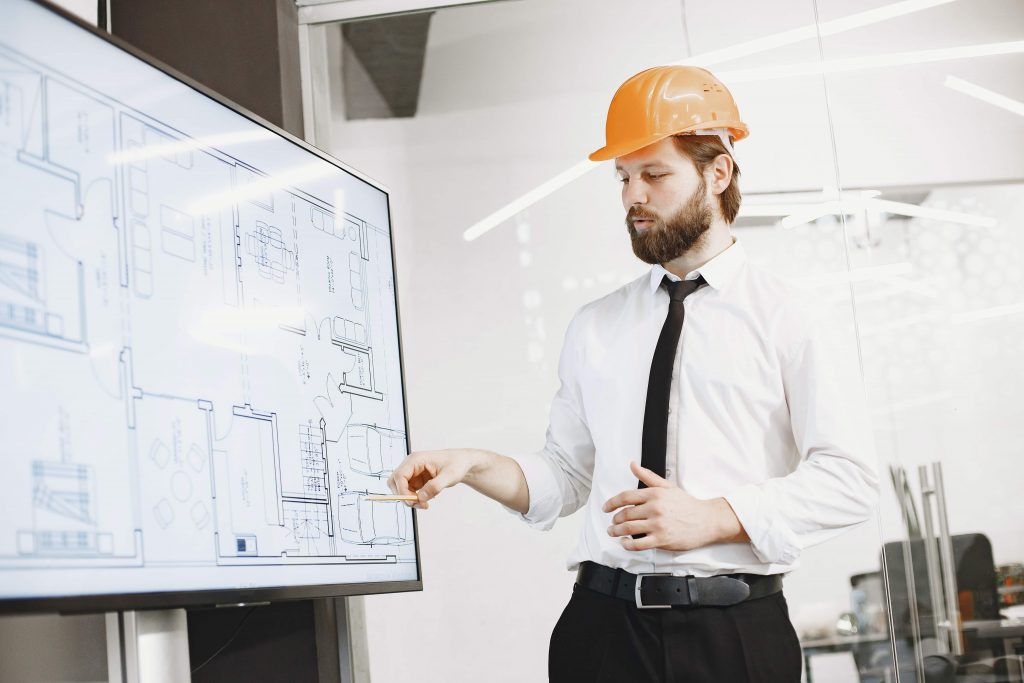
As architects complete the future project’s design and construction, project managers take care of the financial, legal, and organizational aspects, and the structural engineers are responsible for ensuring that all buildings and structures comply with safety regulations. Inspecting a future building’s drawings to see if it meets stability requirements implies conducting detailed calculations.
Structural engineers are an integral part of every construction project, whether it’s a residential building, commercial center, hospital or sports facility. Constructing a building for people to live, work and spend free time requires great attention to safety and comfort details and the complete collaboration of all team members. As with every other team member’s task, structural engineers should constantly communicate with all other professionals involved in the project.
The primary duties of structural engineers are:
- Making accurate calculations: Structural engineers are responsible for determining the load-bearing capacity of buildings and other structures through strategic calculations. Calculating forces, stress, and pressures are essential for structurally sound buildings.
- Making safety assessments: Structural engineers will have to assess the safety of existing structures and buildings, whether residential, industrial, or commercial.
- Inspections: Structural engineers inspect the foundations, walls, and other components of a structure to ensure everything meets building codes.
- Designing solutions: Structural engineers work closely with the architects and designers to create structures that are safe and aesthetically pleasing.
Soft Skills for Structural Engineers
Apart from technical knowledge, structural engineers also need to develop specific soft skills. Here are a few to consider:
- Sharp eye for detail: As they are responsible for assessing the safety of a structure, structural engineers must pay attention to detail and look beyond the surface.
- Communication: Open-mindedness and readiness to communicate with the team will guarantee that all information is exchanged efficiently.
- Decision-making: Structural engineers are able to make quick decisions and develop innovative solutions for projects of varying complexity.
Field Engineer or Site Clerk
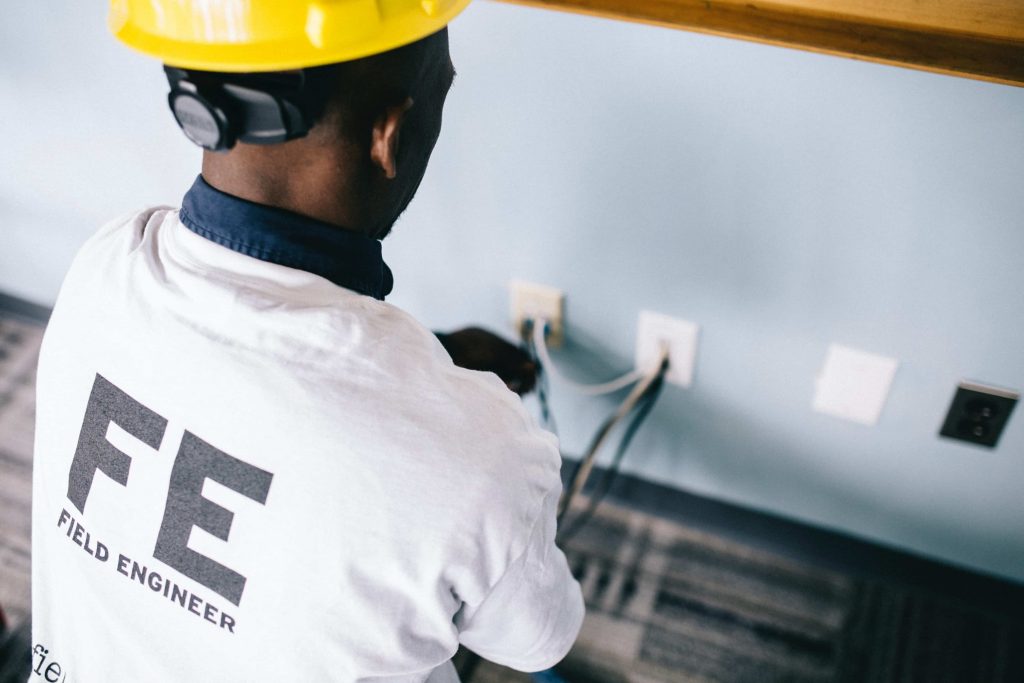
Field engineers (site clerks) provide support to the construction team on-site. Their duties go beyond just taking notes, as they are expected to collaborate with all teams and assist in day-to-day operations. While working on daily tasks, field engineers always keep updated building plans in mind and report to the general foreman or superintendent. This is an entry-level position ideal for everyone looking for first-hand experience in the industry.
In addition, site clerk duties involve providing constant updates to chief engineers who are unable to visit the site every day.
A site clerk’s main duties include:
- Keeping detailed work records
- Organizing construction documents
- Ordering supplies
- Keeping track of job expenses and budgets
- Ensuring the adequate flow of communication between tradespeople, suppliers, and other teams involved
- Inspect the building for any issues and defects
Electrical Engineer
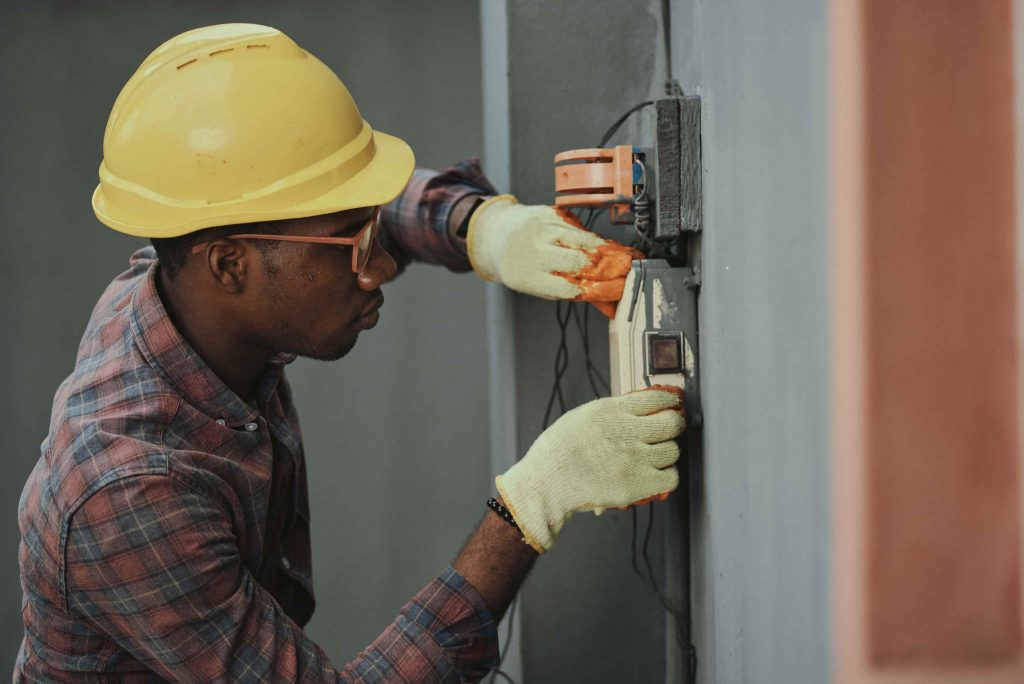
Modern society runs on electricity, and it’s up to electrical engineers to ensure all wiring systems are safe and up to date. Electrical engineers visit the site regularly and provide their expertise to inspect wiring systems and ensure they meet all necessary safety regulations.
The main duties of electrical engineers include:
- Discussing the wiring and electrical requirements with clients
- Designing plans for electrical systems
- Analyzing the cost of the project and any potential hazards
- Checking and performing tests on the current wiring system in place for any possible issues
- Ensuring compliance with safety regulations
Mechanical Engineer

Mechanical site engineers are involved in construction projects that rely heavily on specialized tools and machinery. This implies they must have knowledge of machinery used in construction, as well as their maintenance. A mechanical engineer’s duties include the following:
- Supervising and monitoring the installation, dismantling and maintenance of project machinery
- Testing and inspecting tools for possible defects
- Making sure all machines meet safety requirements
- Interpreting construction designs and breaking them into digestible chunks for their fellow engineers
- Providing technical support in times of need
Quality Assurance Engineer
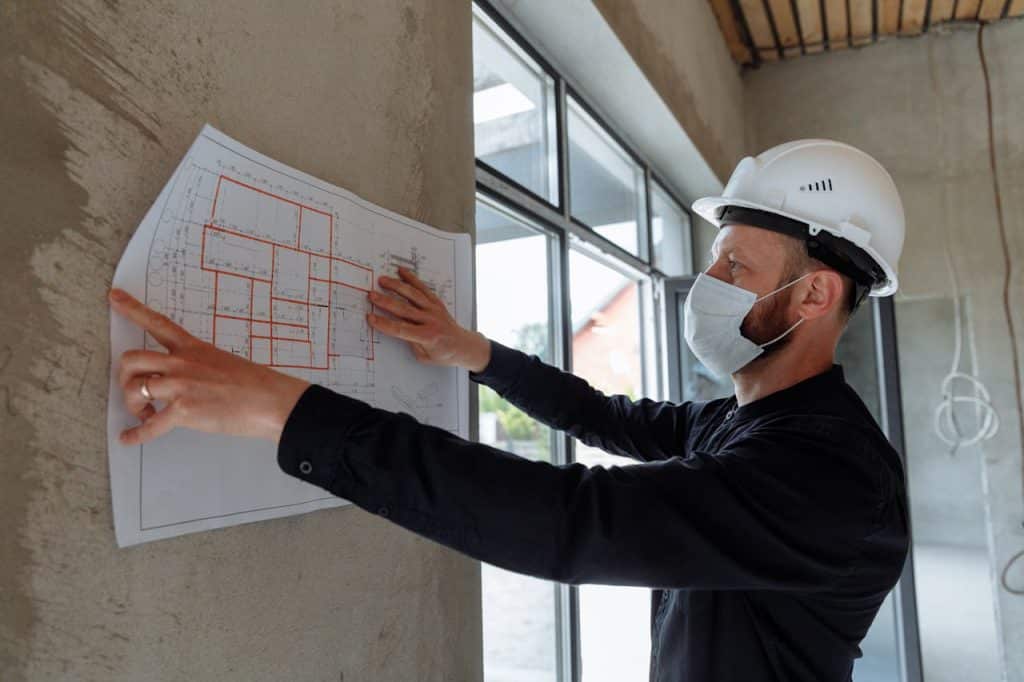
Quality assurance (QA) or quality control (QC) engineers take responsibility for ensuring a construction project meets all of its specifications and corresponds to the industry’s regulations.
QA experts inspect the entire construction process to monitor each step of the construction project implementation. With a long list of responsibilities, QC engineers are required to meet the client’s highest expectations.
The main duties of QA engineers include:
- Creating QA/QC process plans
- Analyzing construction plans and testing processes
- Ensuring a building meets safety, health and environmental requirements
- Implementing quantitative and qualitative data analysis
- Communicate with outsourcing assembly suppliers
- Testing materials used in the construction process
- Conducting periodic review meetings with the team to assess performance
Soft Skills for Engineers
While technical skills are essential for any engineer in the construction industry, one shouldn’t overlook soft skills:
- Communication: Whether you are an electrical, mechanical, or quality control engineer, having excellent communication skills, both verbal and written, will help you effectively collaborate with other team members.
- Problem identification: Not all problems are apparent. Good problem-identification skills are required to recognize and resolve potential issues that could arise during the building process.
- Problem-solving: The construction industry is full of unexpected and stressful situations, most of which need an on-the-spot solution. Engineers must learn how to think on their feet and find quick solutions when something goes wrong.
Designer

Designers work closely with the architects and safety engineers to sketch and draw the future building. Although both the architects and designers create the preliminary design of the building, designers are expected to combine both their technical and artistic skills to create a visually stimulating image of the project. Another key difference between the two positions is that only registered and trained people can call themselves architects. That said, every architect can be a designer, but not all designers are architects.
Designers illustrate their ideas with 3D models, helping the client visualize the project to its fullest extent.
A designer’s main duties include:
- Creating drawings, illustrations and 3D models from blueprints provided by architects
- Attending design meetings with the architects, engineers and construction teams
- Providing technical support in design decisions
- Researching and gathering materials for the project
- Updating any changes in design plans as requested by the client or the safety engineer
Interior Designer

Interior designers are professionals working closely with architects and engineers to create an ergonomic and aesthetically pleasing interior environment for future buildings. Hiring an interior designer is not mandatory but can be an invaluable addition to the team.
Interior designers strive to combine all aspects of a building – from the structure to the furniture and accessories – to create a cohesive space. If designers may also participate in planning and visualizing the outer shell of the building, interior designers mainly focus on the internal spaces.
Interior designers are in charge of:
- Studying construction plans and blueprints to understand a project’s structure
- Developing and sketching plans for living and working spaces
- Identifying and sourcing furniture, appliances, curtains, fabrics, and light fixtures
- Creating a 3D model of the internal space
- Recommending changes to the construction plans in order to improve the building’s ergonomics
- Purchasing furniture and other accessories according to budget and client’s expectations
- Helping to figure out where to place electrical outlets for lighting or plumbing fixtures
- Choose materials for flooring, walls, and ceilings
Soft Skills for Designers
Whether you design external or internal spaces, specific soft skills will be beneficial in any job. Here are a few:
- Communication: Designers must have amazing communication skills, since they frequently collaborate with other team members and are in direct contact with the client. Having advanced communication skills will help you present your ideas and professionally explain the construction process.
- Time management: Designing a building requires strict deadlines to move forward with the project. A designer must be able to manage their time efficiently to meet the demands of a construction project.
- Critical thinking: Thinking outside the box to find quick and effective solutions for any problems that may arise during construction will save you much time and resources.
- Creativity: Having an eye for detail and the ability to come up with creative solutions will help you create unique designs that stand out.
Project Administrator

If there is no assistant project manager, the project administrator will be responsible for coordinating and managing all paperwork of a construction project. With at least 2-3 years of relevant experience, project administrators are knowledgeable in project planning, budgeting, and scheduling.
A project administrators’ daily duties include:
- Reviewing the documents related to each project
- Coordinating between all parties involved in the project
- Ensuring everyone is on the same page and has the updated versions of the drawings and documents
- Keeping track of a project’s progress and ensuring it is staying on schedule
- Ensuring that all liabilities are addressed and met
- Maintaining accurate records and reports for a project and keeping stakeholders informed of any changes
Project administrators should also have basic knowledge of construction engineering and contract management and be well-versed in construction project management software.
General Foreman
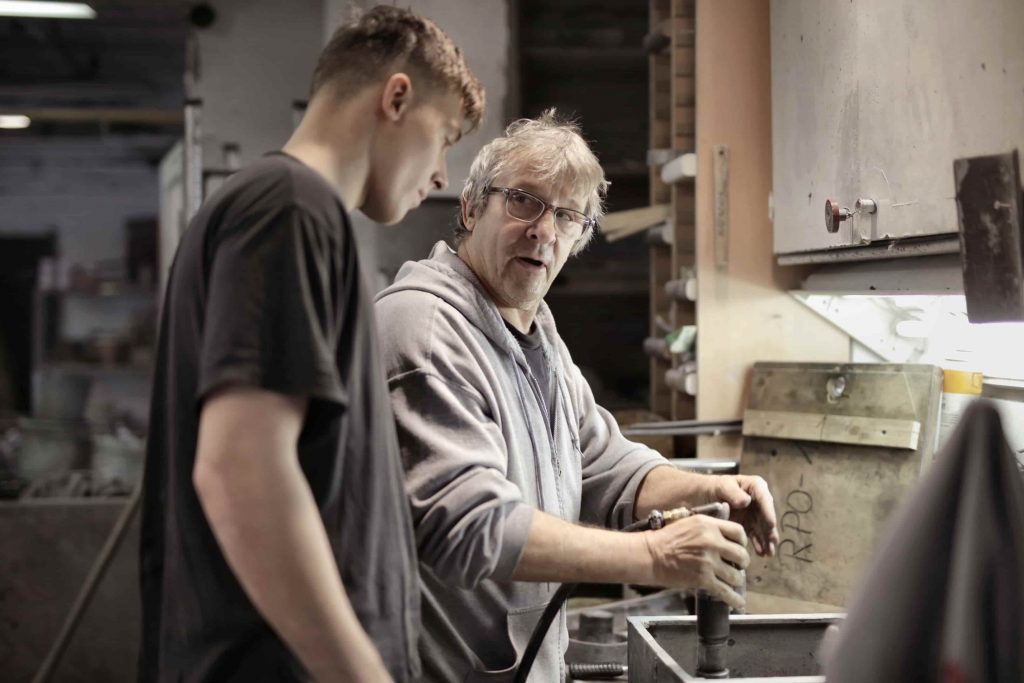
A general foreman has the highest working position on the worksite. They supervise the staff, subcontractors, and day-to-day activities of the construction project. General foremen are in charge of personnel management, safety and quality control, scheduling, and workforce coordination. They must also be able to interpret blueprints and diagrams accurately and have extended knowledge of different building codes, safety regulations, and engineering principles.
General foremen need to:
- Supervise the subcontractors and workers on site
- Monitor construction progress and report to the superintendent in case of delays
- Ensure all safety policies and rules are followed on the construction site
- Coordinate with other departments to ensure smooth operation
Typically working for an hourly rate, a general foreman has a higher pay grade than a builder but more extended responsibilities.
Trade Foreman
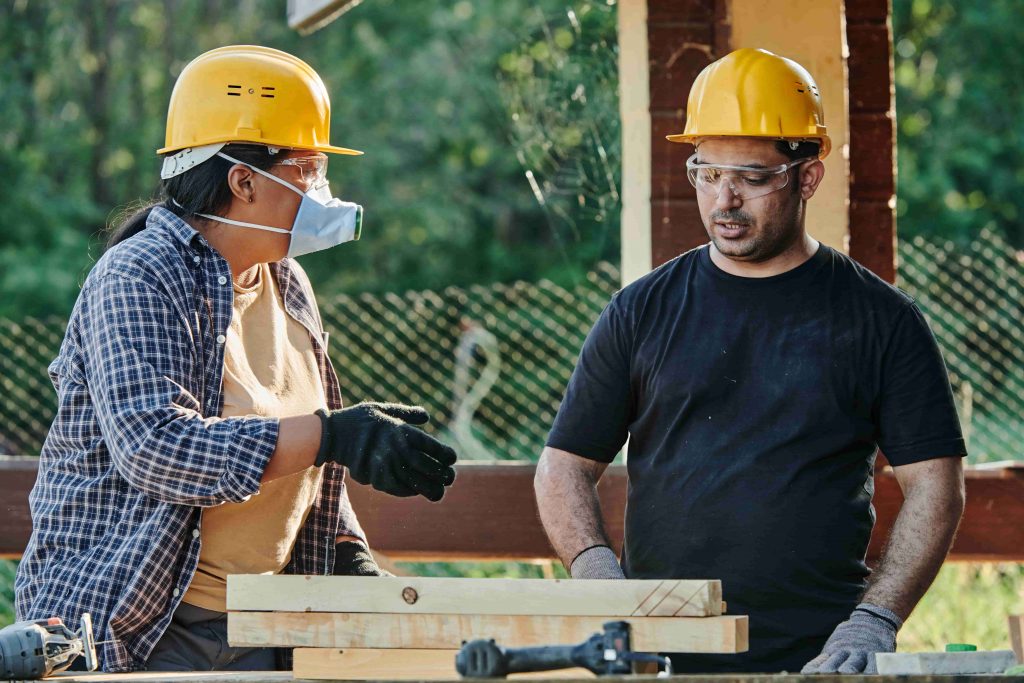
Also referred to as a “working foreman,” a trade foreman is responsible for supervising crews of a specific specialty. On a typical construction site, there should be an ironwork foreman, carpentry foreman, electrical foreman, and so on.
Trade foremen have the following tasks:
- Ensure the output of their workers is in line with quality and safety standards
- Manage the material supply of their trade
- Instruct the team on proper construction techniques
- Ensure the team preserves all safety rules and measures
- Train workers and evaluate their performance
The Quality Surveyor

Often advising the client or the contractor, the quality surveyor is responsible for ensuring the construction project meets all internal and external regulations. Quality surveyors maintain a watchful eye over the building process and inspect the work for any anomalies.
Quality surveyors must:
- Understand all relevant regulations, codes, and standards
- Perform regular inspections and take samples for tests
- Record the findings of their survey and report discrepancies
- Ensure a team uses all materials correctly
- Employ corrective measures when necessary
How to Seamlessly Manage Construction Teams
Overall, a full construction team includes many diverse roles collaborating to complete a single project. To ensure a team works efficiently, construction companies must invest in efforts to boost the team spirit and create a comfortable working environment for everyone.
It canbe difficult to develop an effective communication system to ensure every team member clearly understands their roles and responsibilities. However, once there is the right software solution in place, it can facilitate collaboration and streamline the team’s workflow.
Buildern’s team management capabilities allow construction companies to take their internal communication to a new level. Use it to assign tasks and monitor their completion, automate communication processes, track project progress in real-time, and more. Buildern is a platform with a highly intuitive user-oriented interface. This makes construction workflow easier and faster.
Here’s what you can do with Buildern!
#1 Assign roles and permission to each team member to help them stay on the same page.
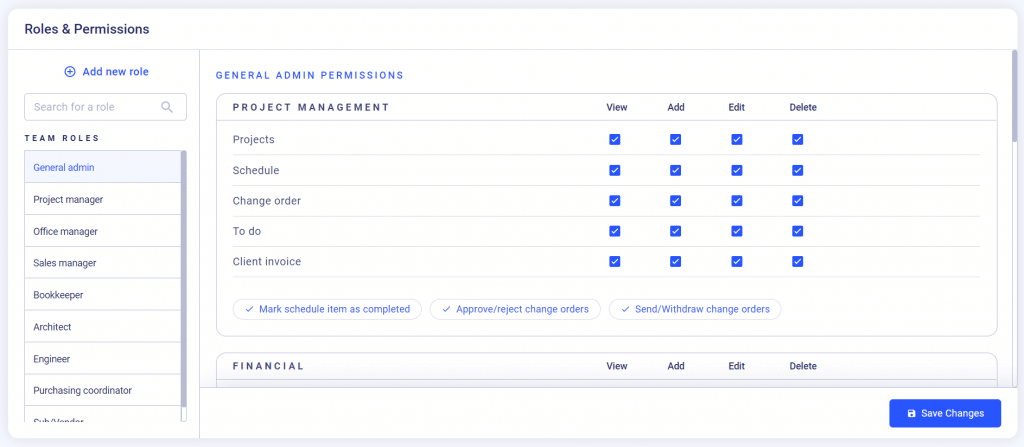
#2 Create Gantt charts to track a project’s progress.
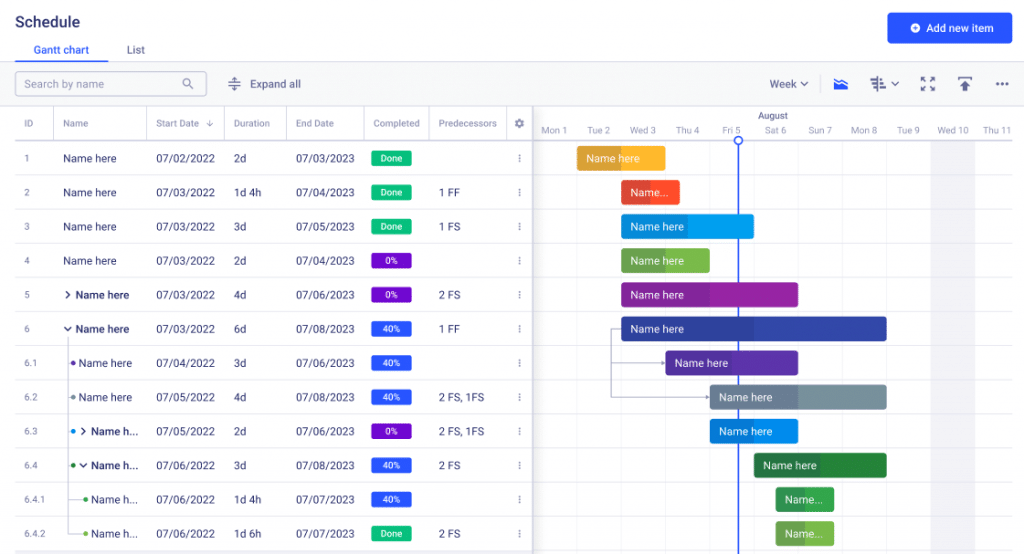
#3 Store project-related documentation in one place and organize everything in folders.
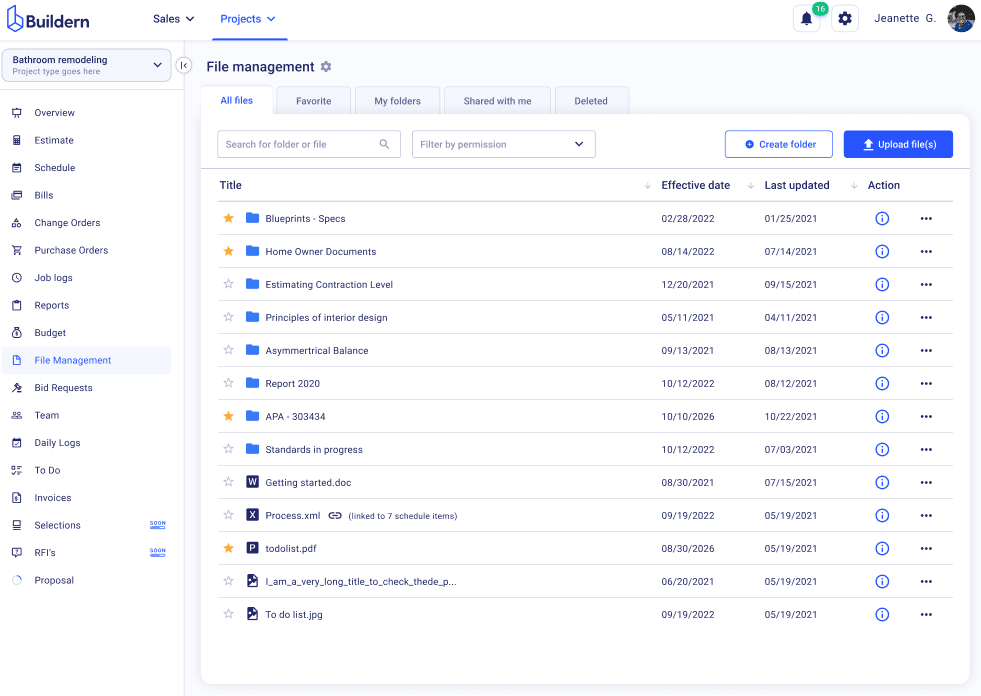
#4 Generate WIP reports to inform your client and stakeholders of the project’s progress.
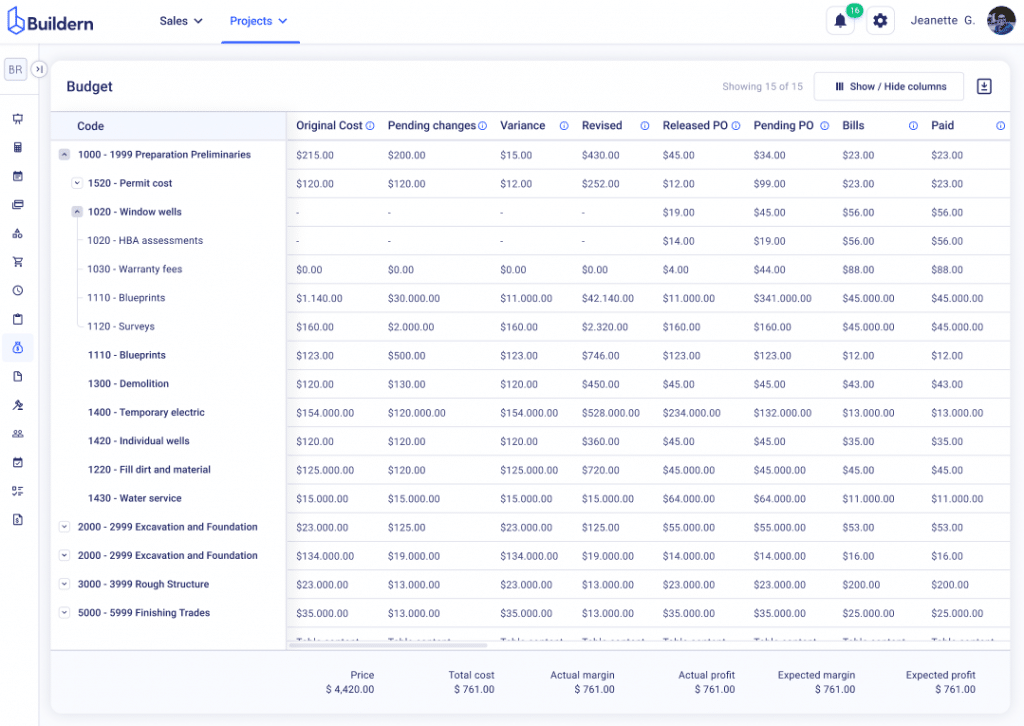
#5 Create and send invoices directly from your professional dashboard.

Conclusion
At the end of the day, having an efficient construction project team structure and a management system in place is crucial for a successful construction project. With a well-rounded team, achieving a set goal is no longer a dream but a reality.
Don’t neglect the power of teamwork — if you have a group of skilled professionals working in synergy, a project is much more likely to be completed on time and with high-quality results.
Using Buildern, you can design an efficient construction team management system and take your internal communication to the next level. Streamline workflow, boost team spirit, and quickly achieve even the most ambitious construction goals.
Start using Buildern today to make your construction projects run smoothly!

![Detailed Construction Project Cost Breakdown [Examples Included]](https://buildern.com/resources/wp-content/uploads/2024/09/BLOG_Cover_Construction-project-cost-breakdown-2-copy-150x150.webp)


![Detailed Construction Project Cost Breakdown [Examples Included]](https://buildern.com/resources/wp-content/uploads/2024/09/BLOG_Cover_Construction-project-cost-breakdown-2-copy-768x501.webp)
